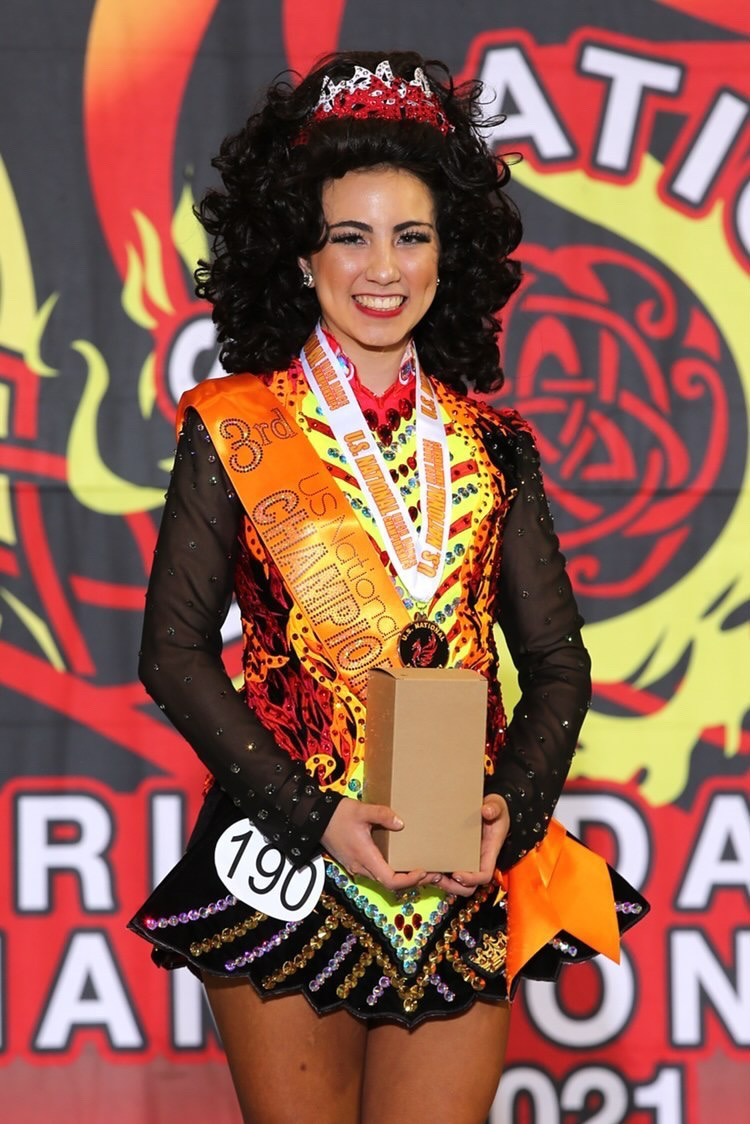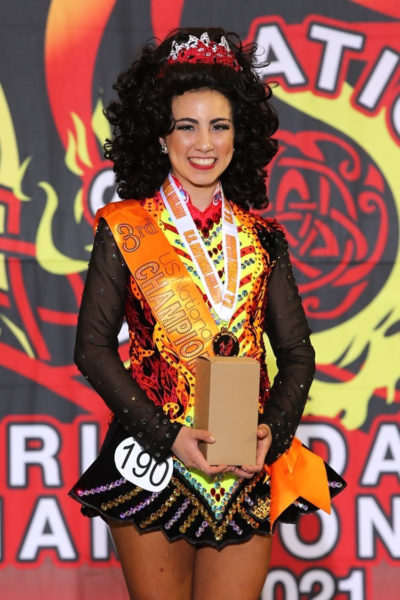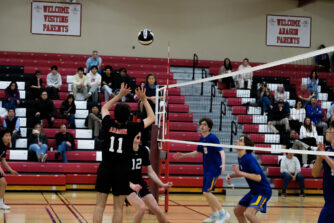

Ever since she was a child, junior Amelia Aquipel has been passionate about dancing. She began ballet and gymnastics lessons when she was seven years old. Since then, her quest for dancing has never stopped. Eager to learn more, her enthusiasm ultimately led her to discover Irish dance.
“One day, I was just scrolling through the [San Mateo Parks and Recreation Center] magazine and happened to find this little spot on the magazine that said Irish dance,” Amelia Aquipel said. “The next day, I went and did it. And then I never stopped and became an Irish dancer.”
Amelia Aquipel is now a student at O’Connor-Kennedy Dance Academy for Irish dance and is enrolled in Middle College. She is currently a Level 6 Open Championship solo dancer, the highest level in Irish dance. She has also danced in ceili group dances with four to eight other Irish dancers.
“She absolutely loved dancing,” said Sue Aquipel, Amelia Aquipel’s mother. “She kept signing up for classes and got a chance to perform in the San Francisco St. Patrick’s Day parade.”
Irish dance is a style of step dance with elaborate footwork and is the precursor to modern tap-dance. It originated from traditional Celtic ceremonies, rituals and festivals. Today, it has evolved into dance competitions known as Feiseanna.
“Irish dance is a competitive sport that consists of two types of shoes, a lot of stamina and a lot of determination and hard work,” Amelia Aquipel said. “There’s hard shoes, which are like a tap performance, and we usually dance two rounds in hard shoes. Then there’s also the soft shoes, or the light shoes, which are more of a ballet and athletic performance, and you only dance one round at a competition for that.”
Irish Feiseanna have three different rounds: hard shoe tap dance, soft shoe performance and a contemporary dance. Competitors dress in colorful dresses decorated with crystal beads with intricate, oftentimes Celtic-inspired patterns. A panel of judges scores based on musicality, technique, difficulty, style, execution and other subtle details.
In November of 2019, Amelia Aquipel qualified for the 2020 National level Feiseanna in Nashville. She was thrilled, but only a few months later, the tournament was canceled due to the pandemic. After a long year without competing due to the pandemic, Feiseanna have resumed.
“She kept signing up for classes and got a chance to perform in the San Francisco St. Patrick’s Day parade”
Amelia Aquipel participated in the U.S. National Irish Dance Competition hosted in Phoenix, Arizona in July of 2020. This year, Amelia Aquipel ranked 55th in the U-16 group at the U.S. National Irish Dance competition, which consisted of about 160 girls. She also ranked third in the U.S. in the Level 5 category for the preliminary championships.
“Irish dance [has] made me more determined and it’s really given me more drive and motivation in my regular life,” Amelia Aquipel said. “I have a lot of passion for dance and it’s taught me to have more passion for the other things I do like school and helping people.”
Amelia Aquipel is currently preparing for the Western U.S. Region Oireachtas that will take place in November. This year she hopes to make it to the top 15 and qualify for world level competitions. In 2019, she placed 27th in the U-14 group.
“I think it would be a really big honor to be able to go to Worlds,” Amelia Aquipel said. “That’s … a lifelong goal I’ve had for pretty much all eight years I’ve danced. Once you qualify for the World Championships, … you’re in the top 1% of dancers around the world.”
Being a dancer requires hard work and commitment over many years. This means hours of diligent practice each day. On a typical weekday, she does her homework, then immediately goes to dance lessons.
“I usually leave [home] at 4:30 p.m., drive about an hour [to O’Connor Kennedy] and I dance [for] about three hours,” Amelia Aquipel said. “It usually will end at 7:30 p.m. or 8:30 p.m. and then I come home and stretch. I’m usually trying to go to bed by 10:30 p.m. or 11 p.m.”
Making it to nationals is definitely not easy. “She sacrifices a lot,” Sue Aquipel said. “She’ll miss birthday parties and school dances and functions … in order to practice or be in the studio. It’s been great to see her passion through the years, how devoted she is to this and to see her set and achieve her goals.”
Despite the many challenges Amelia Aquipel faces, her family and friends support her every step of the way.
“My mom is at that 3 a.m. to 4 a.m. [session] when we have to do makeup and hair appointments,” Amelia Aquipel said. “She’s been my biggest supporter. My guest teachers and friends are always there for me and help me when I need that … extra support.”



